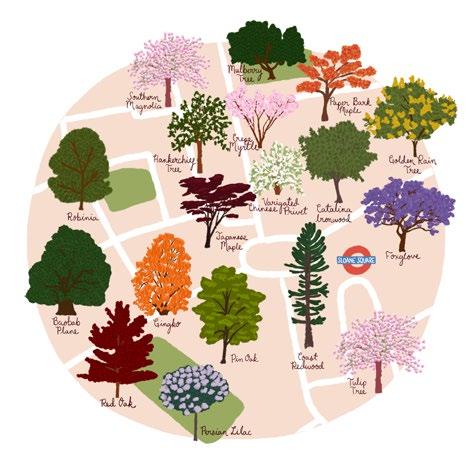
2 minute read
Green Infrastructure
TARGET Increase Urban Greening Factor by 25% by 2030
The environmental and social benefits provided by nature are numerous5 – from improving air quality and stabilising air temperatures, absorbing carbon and regulating flood waters, to mental and physical health benefits.
From a baseline Urban Greening Factor6 of 0.18, we have to date achieved a 12.3% increase to 0.20, alongside the creation of an additional 540m2 of green space.
Our approach has long focused on climate resilience, acknowledging that this requires a transition to ‘nearnative’ species and a holistic, systematic approach. This does present challenges, such as how we improve bare ground cover under trees without extensive watering to help plants establish.
By partnering with academic specialists, including the Natural History Museum, Professor James Hitchmouth and Dr Mark Spencer, we have set a biodiversity baseline from which to improve across our 14 gardens. Through 2022, our biodiversity focus has included the introduction of ponds and expansion of wildflowers and pollinator-friendly planting. Whilst a small intervention, natural ponds bring a significant benefit to local wildlife – and have enabled frogs to thrive in this small corner of Chelsea.
Building on the success of the Heritage Pocket Forest on Pont Street planted in 2021, our second "rewilding" project in partnership with Louis Vuitton, Moët & Chandon and SUGi resulted in 240m2 of previously hard surfaced land planted with 780 trees and shrubs. Located at the north end of Chelsea Square between the Royal Marsden and Royal Brompton hospitals, the Serenity Pocket Forest aims to create a connection with nature and an oasis of calm for hospital workers, visitors and local residents alike –providing health and wellbeing benefits in addition to environmental gains.
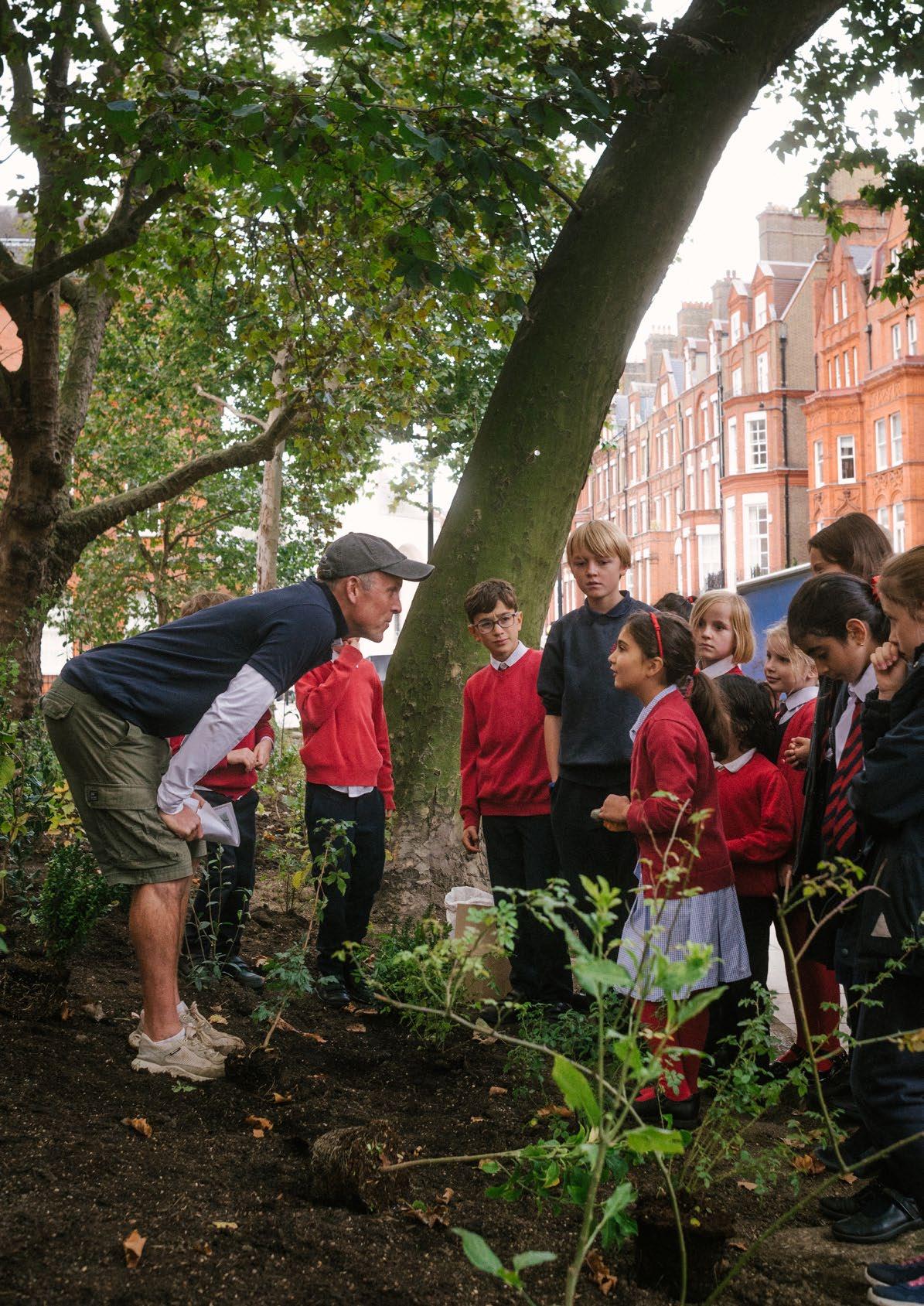
Case Study
Case study: Greening Sloane Street
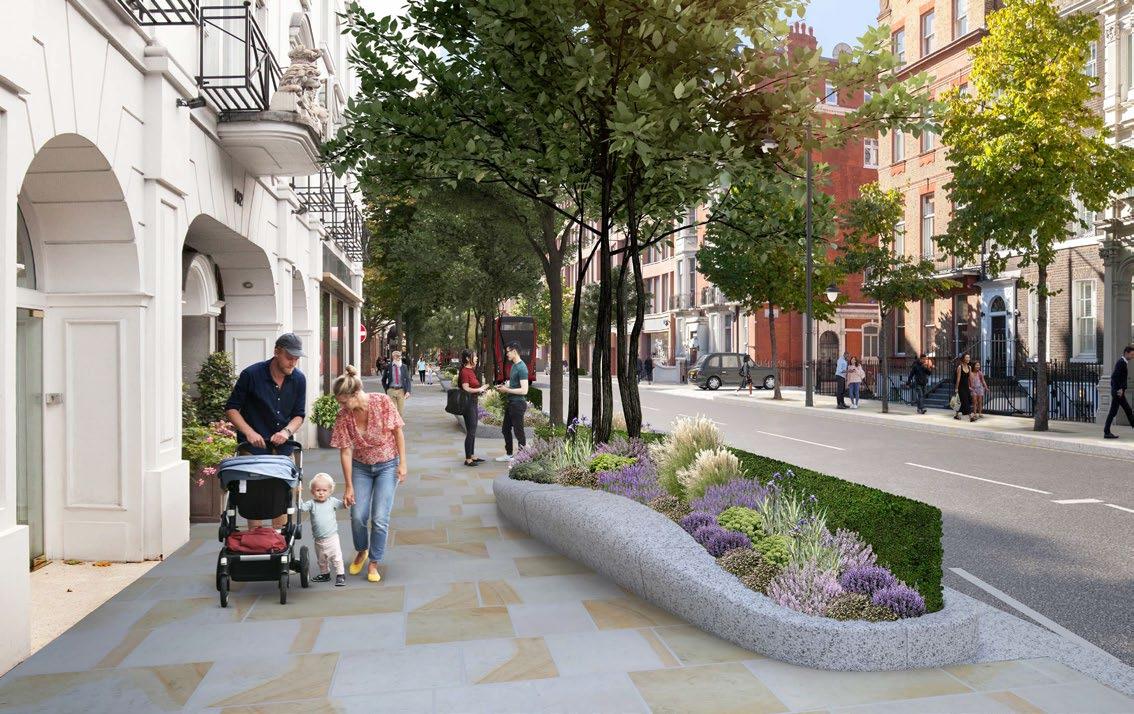
A major transformation of Sloane Street has begun, with the aim to create a stunning green boulevard spanning from Knightsbridge to Sloane Square, due for completion at the end of 2024. The £46 million investment includes significant widening of the street’s pavements, along with a magnificent planting scheme, elegant street furniture and enhanced lighting while subtly "designing in" additional security measures, to create a more welcoming environment for pedestrians. Planting is being overseen by multiple Chelsea Flower Show winner,
Andy Sturgeon, who will follow a "royal" colour palette of rich maroons, reds, purples and blues for the diverse and climate-resilient mix of flowers, shrubs and over 100 new trees.
With the project’s partners committed to a more sustainable future, the whole life of the scheme is designed to be low carbon. In addition to the significant planting on the street, a newly cultivated "pocket forest" (created in a partnership between Cadogan and Louis Vuitton) extends the greening, beehives and ponds in Cadogan Place Gardens encourage biodiversity, and new waste collection bikes are taking trucks off the road and further supporting the improvement of local air quality.
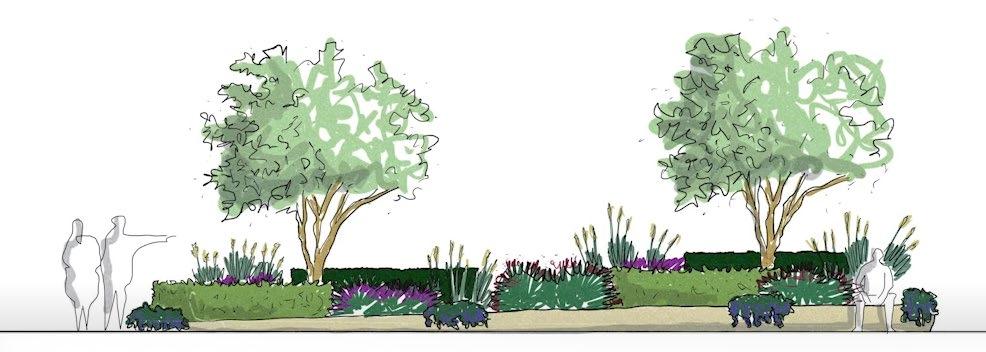
Case Study
Cadogan partners with Louis Vuitton and Moët & Chandon to create second "Pocket Forest"
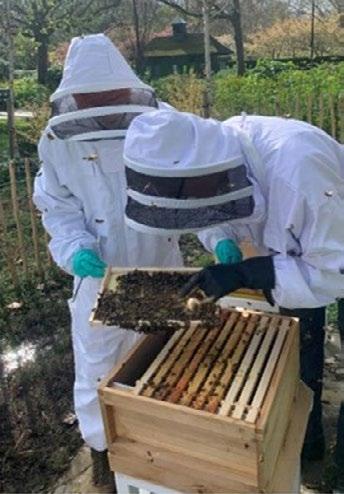
At the heart of a residential square and adjoining two hospitals (the Royal Brompton and Royal Marsden) the "Serenity Pocket Forest" has resulted in 240m2 of previously hard-surfaced land planted with 780 trees and shrubs.
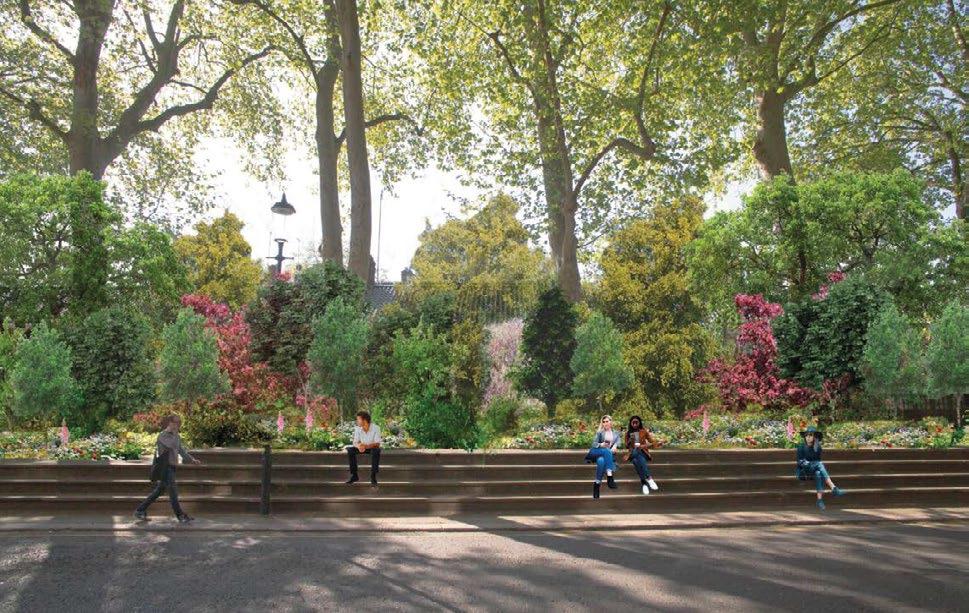

The pocket forest was first displayed at the entrance to Chelsea Flower Show in 2022, illustrating how minimal urban space can create maximal biodiversity, reintroduce indigenous species and reconnect people with nature in our cities.
It is the second time that SUGi, the globally renowned organisation dedicated to restoring 100% native forests in urban spaces, has joined forces with Louis Vuitton and Cadogan to increase the neighbourhood’s biodiversity and contribute towards healthier air quality (our first project saw a pocket forest planted on Pont Street in Chelsea in autumn 2021). With the intention of becoming selfsustaining withing three years, this project is a blossoming example of urban rewilding and ecological sustainability.
Case Study
Nurturing Innovation
Innovative technology offers significant opportunities to help tackle global challenges. Through 2022 we partnered with Gentian to use satellite data to remotely assess viability for living roofs in Chelsea. This is an essential first step in greening our buildings – taking a portfoliolevel, science-based approach to deliver the greatest impact. We expect to install our first living roofs in 2023.
Bottom


